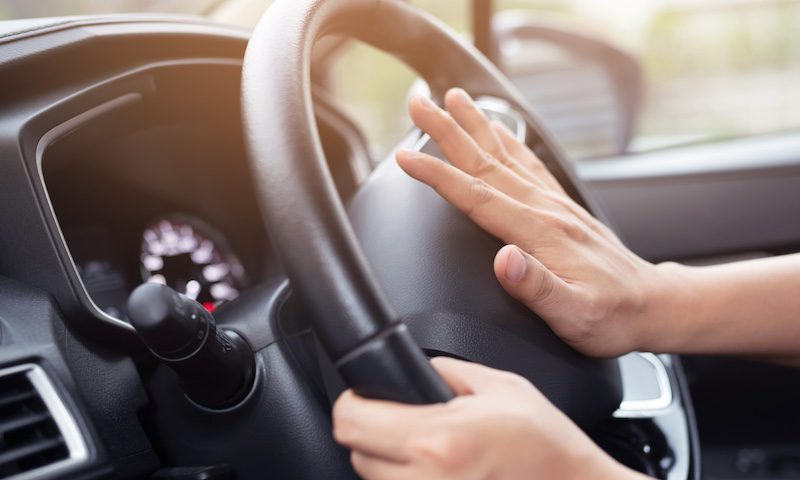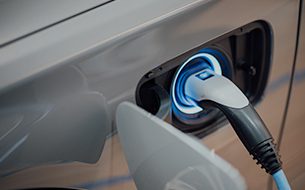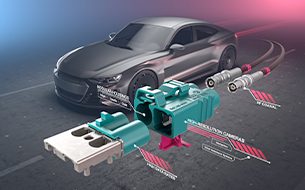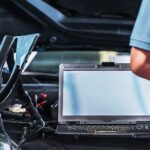Alerts and Alarms: Connecting Horns and Backup Alarms
These simple but essential vehicle functions can be incorporated into automotive designs with a combination of custom and legacy interconnects.
While much of the attention on automotive innovation today is focused on electrification and drivetrain technologies, if you really want to attract attention in a car, automotive horns or backup alarms will get the job done. Since the days of the Model T and its manual “ahooga” horn, being able to quickly get the attention of other drivers, pedestrians, animals on the road, or your date (OK, don’t do that) depends on a clear, recognizable, suitably loud horn. If you are driving a commercial vehicle, an equally essential safety function is a backup horn to alert people behind your vehicle that it is coming their way.
As horns and backup alarms have evolved, these audible alert devices have become integrated with other electronic systems that add safety, comfort, and style to vehicles. Today’s horns can be customized to driver’s preference for volume and tone. In some vehicles, they can even coordinate with vehicle sensor and camera systems to automate functions.

Electromechanical horns
Electromechanical and solid state horns are similar in sound and appearance. However, designers should understand the differences to specify the best interconnects for each vehicle system.
Electromechanical horns operates with basic mechanical components: plunger, diaphragm, coil of wire, tuning screw, and contacts. When the horn is activated, the coil of wire creates a magnetic field that moves the plunger and diaphragm inwards, which then breaks the connections of the contact and interrupts the flow of current, leading to the dissipation of the magnetic field. Next, the plunger and diaphragm return to the resting position, causing the contacts to reconnect and current to flow once again. This process is completed in a couple seconds, but the diaphragm will move back and forth 100-170 times, depending on the frequency of the horn. (Visit Chief’s blog to learn more about this cycle and the science of sound.)
The distance between the contacts can be changed with the tuning screw, which adjusts how long the cycle takes, and therefore the frequency of the sound. However, this constant breaking of a circuit eventually causes the contacts to wear out. Specifying quality components will extend the horn’s life expectancy. Typical electromechanical horns will usually last for a minimum of 50,000 beeps. However, Chief supplies its customers with products by Seger, whose horns are tested and proved for 100,000 beeps, making this line a better choice for increased longevity and decreased maintenance costs.
Solid state horns
Solid state horns are made of almost the same exact components as their electromechanical counterparts. The only difference is that an integrated circuit (IC) takes the place of the tuning screw and contacts. The IC is able to regulate pulses of current to the horn instead of using the contact method and enables adjustments to the length and interval of the pulses — eliminating the need for the tuning screw.
Without the need for contacts, wear and tear is no longer a concern, which means that solid state horns are guaranteed to operate for one million beeps. The superior functionality of solid state horns makes them a premium warning device option and a superior choice for any application that requires extensive use.
.

Fanfare vs. disc horns
Electric horns are classified as either disc or fanfare. The disc horn is more commonly used and the more cost-effective option. The sound comes straight from the diaphragm, which is located behind a protective plate. Typical applications include but are not limited to scooters, motorcycles, construction and agricultural equipment, and passenger cars.
Fanfare horns, also known as trumpet or snail horns, are essentially the same as the disc horn except for the plastic piece that covers the diaphragm. This piece, which has a tuba-like shape, provides a pathway and a funneled opening for the sound to travel through. The result is a richer, deeper, and slightly more powerful sound.
When selecting an electric horn, two different tones are available: high or low. Low tone horns will typically produce sound in the range of 350-400 Hz and high tone horns will be within 400-500 Hz. To design in, first identify the type of electrical connection and how the horn will be connected to the power supply. Quick connect (QC) terminals or wire connectors are the most common options, but Chief can help determine the best solution for your audible warning device.
When two horns are mounted in the vehicle, one is typically high tone and the other is low tone. The addition of the second horn will only raise the sound pressure of the noise emitted by 2-3 dB. However, the combination creates a richer, higher sound quality, which is a more effective warning in high-noise environments
Customization and collaboration
In this time of tremendous innovation in vehicle technologies, opportunities exist to rethink every system design, making it helpful to work with a distributor that specializes in vehicle systems and can offer insights into a range of legacy and new products. In one case study, for example, a Chief Enterprises customer needed a custom connection for a backup alarm. After evaluating the design, Chief sourced a high-quality back-up alarm from Seger A.S. to provide the longevity and reliability needed, then designed and assembled an equally durable custom pigtail with an Amphenol Sine connector. The combination will provide long-term performance.

Amphenol Sine Systems specializes in interconnects for the heavy-duty markets, where vehicles will be subject to heavy use as well as challenging operating environments. These products have many advantages, including their custom options, such as custom color, keying, labeling, and LED integrations that alert users to location, connection status, and other features. Another advantage to this line is its ability to intermate with Deutsch connectors, a legacy product in use across many vehicle makers. The Amphenol AT Series, ATP Series, and AHD Series connectors are high-performance, cost-effective solutions for automotive, commercial vehicles, and heavy equipment lines. The Amphenol A Series connectors will mate with Deutsch D style connectors and vice versa.
Chief has long-standing relationships with these two vendors, which facilitates advantageous pricing on subcomponents, and warehousing the product reduces lead times. By working with exceptional products that are the industry standard, our engineering team has insights into the best practices and long-term performance of these products in a number of different vehicle applications. The use of CAD software to collaborate on new design projects creates added visibility and U.S. assembly activities occur outside of Chicago.
To learn more about horns, alerts, and custom solutions for vehicle systems, visit Chief Enterprises.
Like this article? Check out our other articles on Innovation and Connected Vehicles, our Automotive Market Page, and our 2023 Article Archive.
Subscribe to our weekly e-newsletters, follow us on LinkedIn, Twitter, and Facebook, and check out our eBook archives for more applicable, expert-informed connectivity content.





